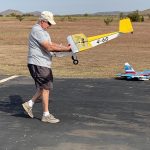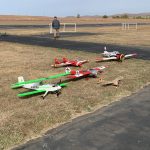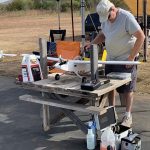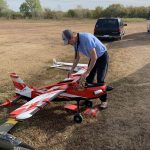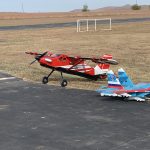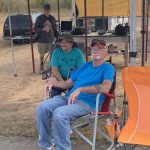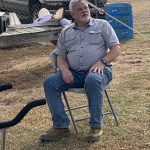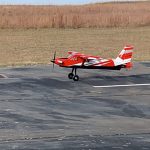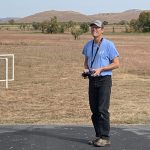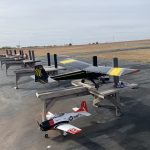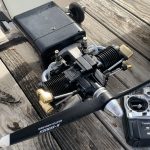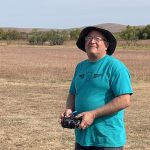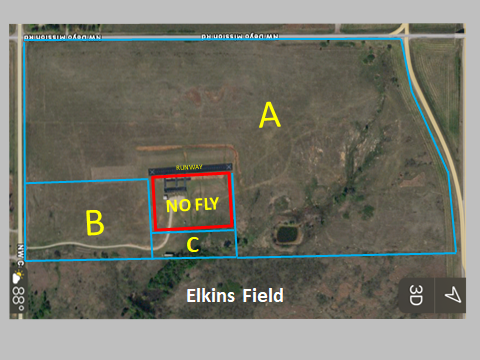Home » Articles posted by LawtonAreaFunFlyers
Author Archives: LawtonAreaFunFlyers
Larry Kruse Fly-In Saturday Oct 21
Thanks Harold, for calling up and leading the Old RC Guard in Honor of Dr. Kruse. It was a great day of flying with lots of flights logged. We all had a good time and lucked out with perfect flying weather.
(more…)
Sep. 16, 2023 flying
Mike and Harold did some formation flying with their electric ducted fan jets as the crew watched and Tom was sky high (with his motor-glider)... Read More
Winter Flying – Jan 8, 2023
A few LAFFS members went out flying around mid-day Sunday. There was one dramatic loss of signal problem as seen in the photos.
[gallery size="medium" ids="2216,2217,2218,2219,2220,2221,2222,2223,2224,2225,2226,2227,2228,2229"]... Read More
Labor Day Flying – Sep 5, 2022
It was a nice day for flying with only a little crosswind trouble from the east.
[gallery ids="2190,2191,2192,2193,2194,2195,2196,2197,2198,2199,2200,2201,2202,2203,2204,2205,2206,2207,2208,2209,2210"]... Read More
August 13th flying
Some LAFFS members out flying last Saturday morning.
[gallery ids="2169,2170,2171,2172,2173,2174,2175,2176,2177,2178,2179,2180,2181,2182,2183,2184,2185,2186,2187"]... Read More
Elkins Field Rules and Safety Guidelines
(Edition: 15 February 2022)
Field Rules & Safety Guidelines PDF file for download: Field Rules & Safety Guidelines
- Governance: All pilots must be members of the Academy of Model Aeronautics (AMA) and Lawton Area Fun Flyer Society (LAFFS) except for LAFFS’ guest pilots and non-AMA pilots enrolled in the AMA “Intro Pilot Program” under the direct supervision of an AMA-designated LAFFS instructor pilot. All pilots must be familiar with and comply with the AMA Safety Guide, FAA regulations, and Elkins Field Rules and Guidelines. (see http://www.modelaircraft.org). FPV pilots must comply with AMA document 550, Unmanned Aircraft Operations Utilizing First-person View. See: http://www.lawtonareafunflyers.org/blog/category/rules/
- Field Diagram:
Area A: for aircraft operating from the main runway.
Area B: Primarily for sailplanes, park flyers, small foamies, rotorcraft, and others that can’t safely integrate with aircraft operating from the main runway. Aircraft such as sailplanes, etc., climbing to higher altitudes and requiring more area may fly outside of Area B, but use caution not to conflict with aircraft in other areas.
Area C – Corridor: Transition corridor between Areas A and B in either direction. Located between the outhouse and the trailer. Only used in the late afternoon for downwind leg of the east-side traffic pattern when the low western sun prevents traffic patterns being flown safely to the west of the runway. Area C is not for maneuvering (aerobatics, turns, etc). Don’t fly traffic patterns to the east earlier in the day when the sun is high and the normal pattern to the west would be safe. Pilots must use extreme caution to avoid flying over the parking area and to avoid other aircraft operating in Areas A and B.
No-Fly Area: Do not takeoff from, fly approaches over, or land in the designated “No-Fly” area which includes the pit area, pilot boxes, and parking lot.
- Flight Pattern Flow: It is safest when all aircraft are flowing in the same general direction to avoid mid-air collisions. A recommendation is to fly the upwind leg relatively close to the runway and the downwind leg farthest from the runway in a general box pattern around the airfield. Aircraft can still do maneuvers, aerobatics, etc., if at the completion of the maneuver they resume travel that is not opposite the direction of other aircraft in their vicinity, if possible. Try to avoid cutting diagonally across the pattern, especially when there are several aircraft flying. If you plan to spin down through the pattern, a verbal announcement would help others know your intentions.
- Frequency Control: If not using a 2.4 GHz radio system, frequency control is the responsibility of each pilot. Non-2.4 GHz transmitters should have something clearly identifying their channel (frequency flag, channel number tag, etc.), preferably attached to the antenna.
- Pilot boxes: Once in the air, stand in the fenced pilot boxes or no closer to the runway than the pilot boxes. Do not stand on or near the runway.
- Verbal Announcements:
22-Jan-2022
Here a few photos of some 3-ship formation flying with Cessna 150s by Mike M, Mike L, and Harold A from last Saturday. I’m not sure who was lead, and I’m not really sure they knew either sometimes:) Sorry about the quality, it was just a cell phone.
— Clem
[gallery size="medium" link="file" ids="1796,1797,1798"]... Read More
Veteran’s Day 2021
Mike L, Mike M, Don H, Tom R, Greg S, Steve J, and Harold A showed up for some fun flying yesterday. These
are not too bad for phone pics…. Larry would be proud. :-)... Read More
Impromptu Labor Day Fly-In 2021
We had an impromptu unofficial Labor Day Fly-In today. Nathan Mills and his two boys were flying small electrics on the south end when I got there around 9am and Gene Wallock was just leaving to go cook breakfast for his wife. Harold Anderson, Mike Mazzo, Mike Light, Tom Regan, Steve Jakubiszyn, and Greg Steen were also there and burning electrons and hydrocarbons.... Read More
